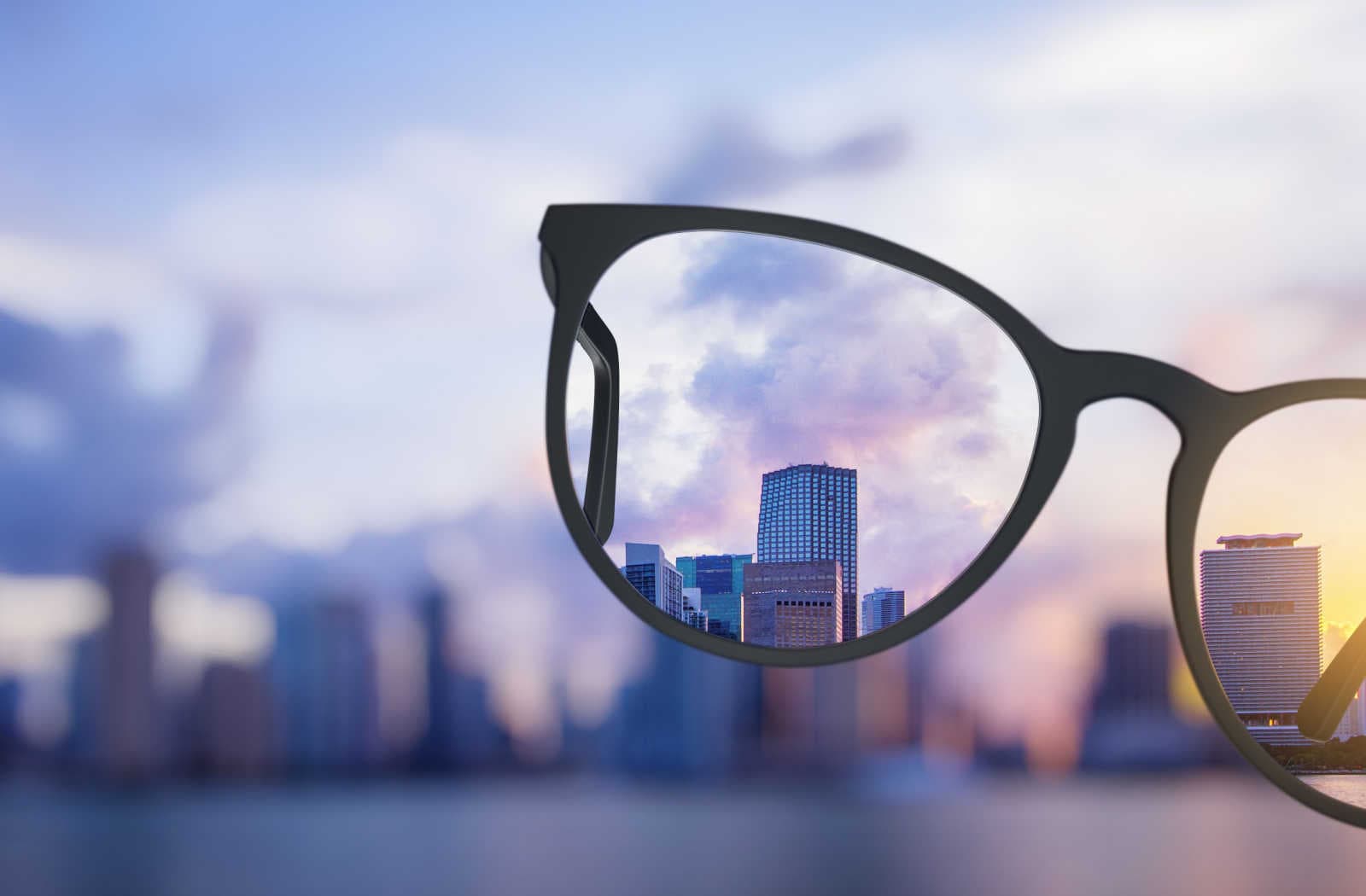
Living with low vision can dramatically impact one’s independence and quality of life. However, recent advancements in assistive technologies offer new hope for those with visual impairments. In particular, innovative low vision glasses now provide practical solutions that can help empower individuals experiencing vision loss to regain functionality in their daily activities.
How Low Vision Glasses Work
Low vision glasses come in various forms and utilize different technologies to assist individuals with low vision. Some common features and functionalities include:
• Magnification: Integrated prisms, prescription lenses, and other optics magnify images to larger sizes. This enlarges text, brings objects visually closer, and reveals finer details.
• Enhanced contrast: Tinting, polarization, or adaptive lighting modifies and intensifies contrasts between objects and backgrounds. This makes items stand out more clearly against cluttered or busy environments.
• Object recognition: Onboard cameras, sensors, and AI algorithms can identify objects in the wearer’s field of vision. This provides audible labels for a better understanding of one’s surroundings.
Some models also offer advantages like glare reduction, improved depth perception, color enhancement, screen readers, blind spot elimination, obstacle avoidance alerts, fall prevention sensors, and more. Battery-powered electronics enable real-time tuning, performance tracking, and connectivity to external devices.
Benefits of Using Low Vision Glasses
Low vision glasses offer a multitude of benefits for individuals with visual impairments, including:
Increased independence
By restoring lost acuity and contrast sensitivity, low vision glasses empower users to comfortably carry out everyday tasks without relying as heavily on assistance from others. Trying to accomplish activities independently often seems challenging for those with untreated vision loss. Simple things like reading, writing, cooking, traveling, shopping, doing housework, and enjoying hobbies become challenging burdens detracting from one’s lifestyle.
Improved safety
Uncorrected vision loss raises risks of accidents like tripping on objects, missing a step, falling off curbs, bumping into people/furniture, knocking things over, misjudging distances, and having trouble finding one’s way even in familiar spaces. By enhancing sight, low vision glasses greatly reduce such safety hazards. That provides much-needed peace of mind.
Greater social interaction
Seeing friends and loved ones’ faces clearly makes a world of positive difference, as does feeling comfortable venturing out to social gatherings and public events. Decreased reliance on magnifiers, monoculars, and guide canes in front of others also helps minimize self-consciousness and embarrassing incidents. All these factors significantly heighten users’ confidence and willingness to socially interact.
Enhanced learning and engagement
Students with low vision struggle to fully participate in classroom lessons and complete assignments as their sighted peers do. Low vision glasses help put them on more even footing by allowing them to clearly see whiteboards, textbooks, worksheets, lab equipment, projection screens, chalkboards, and other educational materials. That facilitates better learning and fuller academic engagement.
Reduced reliance on other assistive devices
While canes and magnifiers certainly help in certain circumstances, having to wield such conspicuous vision aids constantly can feel awkward or undignified. Putting on a pair of thoughtfully designed glasses eliminates dependence on multiple devices. This streamlines the process of deciphering visual stimuli while integrating more naturally into users’ lifestyles.

Choosing the Right Low Vision Glasses
With the diverse range of low vision glasses available, choosing the right pair depends on your specific needs and preferences. Here are some factors to consider:
The nature of your visual impairment
Those with macular degeneration need different optical enhancements than people experiencing diabetic retinopathy, glaucoma, cataracts, or other conditions. So identifying your particular diagnosis and symptoms will guide the selection of appropriate lens powers, prism configurations, filter types, and augmented tech components.
Desired functionalities
Consider your unique goals and priority activities you hope to regain easy functionality performing daily. Do you most want to read books comfortably, see faces, safely walk around unfamiliar neighborhoods, pursue certain hobbies requiring fine dexterity, or something else? Your intended applications will clarify must-have features versus optional bells and whistles.
Comfort and style
Try on different frame sizes and designs to find the look and feel you like best and will actually enjoy wearing for extended periods. Carefully examine materials, ergonomics, weight distribution, adjustability range, padding, electronics integration, degree of tint, compatibility with separate eyewear you use, and other build quality factors that affect comfort. Also, pick colors and styling suitable for professional, casual, athletic, or formal settings as needed.
Prescription compatibility
If you usually require corrective lenses for nearsightedness, farsightedness, or astigmatism, select low vision glasses that can integrate appropriate prescription strength into their custom optics. Work closely with your optometrist and product specialists to achieve streamlined vision correction tailored to you.
Battery life and connectivity
For electronics-enabled models, consider expected hours of operation per charge cycle and options for powering up on the go. If connecting to phones or computers for advanced features, assess wireless transmission protocols included.
Warranties and customer service
Given their high-tech custom designs, ensure your low vision glasses come with solid product guarantees and support channels in case you need technical assistance, damage/loss coverage, prescription updates, or component replacements. Unconditional return policies also offer helpful peace of mind and flexibility to exchange items if needed.

The Future of Low Vision Glasses
The field of low-vision technology is constantly evolving, with ongoing research and development aiming to enhance the capabilities and functionalities of Envision Low Vision Glasses. Some potential future developments include:
Integration of advanced AI and computer vision:
Sophisticated artificial intelligence algorithms paired with high-resolution cameras and sensors could enable real-time scanning of environments to identify objects and pinpoint potential obstacles in the user’s path. This takes today’s hazard detection capabilities to more advanced levels.
Augmented reality (AR) features:
Heads-up displays integrated seamlessly into next-gen frames might overlay graphical annotations identifying landmarks, street names, building entrances, public transportation options, directions to specified destinations, and other contextual cues onto real-world views. This could help greatly in unfamiliar surroundings.
Personalization and customization:
Sleeker, slimmer profiles with components embedded into lens structures suit more personalized frames matching each user’s precise facial measurements and aesthetic preferences. This allows custom tailoring vision assistance solutions into premium glasses rivaling high-fashion eyewear designs. Tech-enhanced coatings or electrochromic lenses also enable real-time user-controlled tuning of tint, luminance, and optical settings via integrated controls or connected devices.
More lightweight and durable materials:
Lighter weight metals, crystal compounds, and polymers increase wearability while rugged, shatter-resistant builds stand up to demanding daily usage between charges. New bonding techniques also facilitate easier integration of multifunction electronics into ergonomic frames built for all-day comfort.
A wider range of vision profiles supported:
Advancing scientific understanding of varied ocular disorders coupled with increasingly sophisticated adaptive algorithms and optics broadens the applicability of smart vision wear for more types and degrees of visual impairment. This makes such helpful assistive devices accessible to wider demographics.
Conclusion
Innovations in optical technology and augmented eyewear unlock life-changing independence and confidence for the vision impaired. Now, grand adventures, favorite pastimes, and simple day-to-day tasks need not seem so challenging anymore. Just put on a pair of thoughtfully designed low vision glasses customized to your unique needs. The world around you seems to transform at once–brighter, clearer, more navigable. Rediscover the joy of spontaneous exploration and fuller engagement with work, play, family, and friends. The future looks bright for transforming visualization burdens into vehicles of empowerment through ever-advancing AI-enhanced visionwear.




